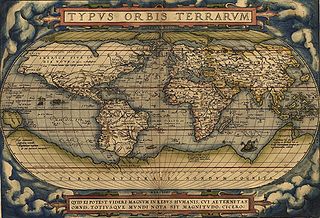
An atlas is a collection of maps; it is typically a bundle of maps of Earth or of a region of Earth.
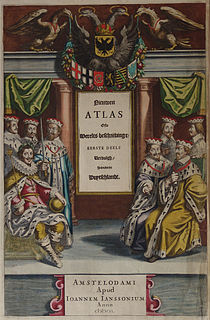
Johannes Janssonius was a Dutch cartographer and publisher who lived and worked in Amsterdam in the 17th century.
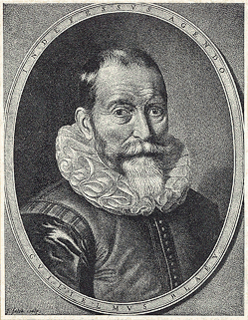
Willem Janszoon Blaeu, also abbreviated to Willem Jansz. Blaeu, was a Dutch cartographer, atlas maker and publisher. Along with his son Johannes Blaeu, Willem is considered one of the notable figures of the Netherlandish/Dutch school of cartography in its golden age.

Jodocus Hondius was a Flemish and Netherlandish engraver and cartographer. He is sometimes called Jodocus Hondius the Elder to distinguish him from his son Jodocus Hondius II. Hondius is best known for his early maps of the New World and Europe, for re-establishing the reputation of the work of Gerard Mercator, and for his portraits of Francis Drake. One of the notable figures in the Golden Age of Dutch/Netherlandish cartography, he helped establish Amsterdam as the center of cartography in Europe in the 17th century.
The Dictionary of Canadian Biography is a dictionary of biographical entries for individuals who have contributed to the history of Canada. The DCB, which was initiated in 1959, is a collaboration between the University of Toronto and Laval University. Fifteen volumes have so far been published with more than 8,400 biographies of individuals who died or whose last known activity fell between the years 1000 and 1930. The entire print edition is online, along with some additional biographies to the year 2000.
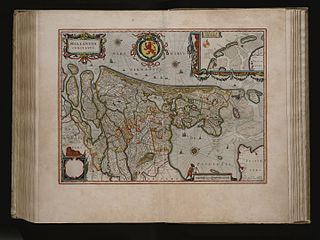
The Atlas Maior is the final version of Joan Blaeu's atlas, published in Amsterdam between 1662 and 1672, in Latin, French, Dutch, German and Spanish, containing 594 maps and around 3,000 pages of text. It was the largest and most expensive book published in the seventeenth century. Earlier, much smaller versions, titled Theatrum Orbis Terrarum, sive, Atlas Novus, were published from 1634 onwards. Like Abraham Ortelius's Theatrum Orbis Terrarum (1570), the Atlas Maior is widely considered a masterpiece of the Golden Age of Dutch/Netherlandish cartography.

Joan Blaeu was a Dutch cartographer born in Alkmaar, the son of cartographer Willem Blaeu.
The history of cartography traces the development of cartography, or mapmaking technology, in human history. Maps have been one of the most important human inventions for millennia, allowing humans to explain and navigate their way through the world. The earliest surviving maps include cave paintings and etchings on tusk and stone, followed by extensive maps produced by ancient Babylon, Greece and Rome, China, and India. In their most simple form maps are two dimensional constructs, however since the age of Classical Greece maps have also been projected onto a three-dimensional sphere known as a globe. The Mercator Projection, developed by Flemish geographer Gerardus Mercator, was widely used as the standard two-dimensional projection of the earth for world maps until the late 20th century, when more accurate projections were formulated. Mercator was also the first to use and popularise the concept of the atlas as a collection of maps.
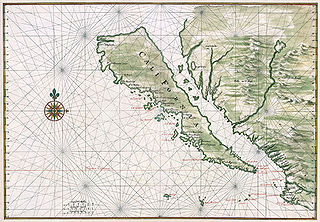
Johannes Vingboons was a Dutch cartographer and watercolourist.

The Harmonia Macrocosmica is a star atlas written by Andreas Cellarius and published in 1660 by Johannes Janssonius. The first part of the atlas contains copper plate prints depicting the world systems of Claudius Ptolemy, Nicolaus Copernicus, and Tycho Brahe. At the end are star maps of the classical and further constellations, the latter ones as introduced by Julius Schiller in his Coelum stellatum christianum of 1627.

Willem Schellinks (1623–1678), was a Dutch painter, draughtsman and etcher of landscapes and marine scenes and also a poet. Willem Schellinks was one of the most widely traveled Dutch artists of his time. He traveled along the Loire and the Seine in 1646, and between 1661 and 1665 he visited England, France, Italy, Malta, Germany and Switzerland, keeping a record of his travels in multiple landscapes and scenic views as well as a journal. Alternative spellings, Schellinger and Schellinx.
The Beudeker Collection is a collection of maps and views of the Netherlands and Belgium in the British Library, created by the Dutch merchant Christoffel Beudeker.

Pieter Goos (1616–1675) was a Dutch cartographer, copperplate engraver, publisher and bookseller. He was the son of Abraham Goos (1590–1643), also a cartographer and map seller. From 1666, Pieter Goos published a number of well produced atlases. He was the first to map Christmas Island, which he labelled "Mony" in his map of the East Indies, published in his 1666 Zee-Atlas. His Atlas ofte Water-Weereld has been cited as one of the best maritime atlases of its time. Another of his fine works was the Oost Indien map published in 1680.

Abraham Goos was a Dutch cartographer, publisher, and engraver. He made globes, maps of North America, a comprehensive map of European coastlines, and the first printed Hebrew language map of The Holy Land.
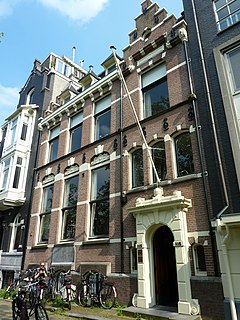
Laurens van der Hem (1621–1678), was a Dutch lawyer and a collector of maps and landscape prints. He is known today for commissioning his meticulously thorough personal version of the Atlas Maior, itself a major work of cartography and art published by his contemporary and friend Joan Blaeu.

The Atlas der Neederlanden, or Atlas of the Netherlands, is a composite atlas which was presumably collected and composed by the publishing company Covens and Mortier in Amsterdam. The maps are gathered in nine volumes and show how the Low Countries, including Belgium and the former colonies of the Netherlands, have developed over the course of about two decades. The atlas contains more than 600 printed and manuscript maps and is preserved by the Special Collections of the University of Amsterdam.

This article covers the science, art and industry of cartography by the people of the Low Countries in the early modern period, especially in the early 16th to early 18th centuries. It includes cartography of the Northern Netherlands, Southern Netherlands and Low Countries in general. It also includes Dutch colonial cartography, i.e. cartography in the Dutch overseas world, in the early modern period.














